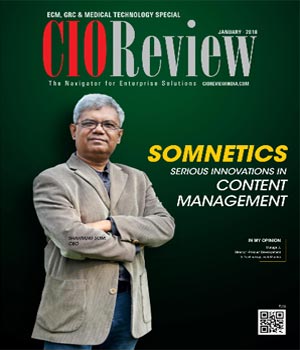
Real Time Collaborative Asset Management
Sandeep Kulkarni, Head-IT, Viom Networks | Thursday, 16 June 2016, 04:59 IST
 Across the industry, outsourced asset maintenance has become one of the noteworthy trends in an effort to drive operational excellence to achieve long term savings, improve service levels and stay ahead of competition.
Across the industry, outsourced asset maintenance has become one of the noteworthy trends in an effort to drive operational excellence to achieve long term savings, improve service levels and stay ahead of competition.
Machine to machine communication can enable various devices like equipment, cars, mobile phones, cameras etc. to connect with each other, collect data and relay it to backend console. The social media and mass collaboration tools can enable organizations to benefit from the collective intelligence of all stakeholders in the value chain and Augmented Reality (AR) to gradually become a part of mobile experience. These technology advancements would definitely have a profound impact on the way organization manage their assets especially in the increasing trend of outsourced maintenance operations.
While majority of businesses traditionally have not kept all maintenance operations in-house, in some verticals today, over two-third of asset maintenance is being outsourced. Even high asset intensive organizations, with highly sensitive information, are moving in this direction. The challenges faced by organizations today are -
• How to monitor third-party maintenance providers to ensure accuracy, safety and quality compliance?
• How to integrate maintenance service providers into in-house operations and maintenance?
• How to manage service levels with contracted workforce?
• How to enable warranty and real time asset tracking?
• How to extend critical asset information like engineering drawings; service histories etc. with service providers?
• How to effectively service customer assets (warranty/after service scenario)
Effective management of extending service networks and outsourcing complexities require a sophisticated collaborative asset management solution. Simply put, organizations need to build tight coordination between the activities of in-house maintenance and outsourced service providers to have alignment across the entire value chain.
In order to address these challenges, organizations need to move from Siloed Asset management to Collaborative asset management. Collaborative asset lifecycle management calls for facilitating communication among disparate business systems to process real time information from partners and creating consolidated view of assets in the value chain.
With the technological advancements in the recent times, organizations can extend their existing systems to address the challenges above.
Critical areas for collaboration are
1. Master data: Master Data Management plays key role in consolidating all maintenance master data from all disparate sources and provides ‘single version of truth’
2. Asset Hub: Asset hub is a real-time processing engine that automatically verifies, cleanses, de-duplicates and merges information and synchronizes all systems. Asset hubs interoperate across different systems in value chain to provide business insight about best maintenance practices and maintenance histories into common asset book.
3. Remote management of assets: With the advent of M2M, every equipment on the planet can be connected to other devices and will be able to talk about its health and performance. Some of the examples could be - increase in room temperature can notify users and automatically switch on air conditioners, dispatching and scheduling of transport assets based on telematics, trigger maintenance activities based on equipment conditions etc and would help to drastically reduce maintenance costs.
4. Latency hot spots: Typically in multi-tier value chains, organizations fail to react in real time to events which impact them. There is latency between events being triggered and action taken to address those critical events. With big data and related analytics, organizations can address latency hot spots across all layers and would be better equipped for predictive maintenance and asset tracking.
Internet of everything has created a paradigm shift in the way organizations have started embedding technology into their business strategies. Social networking, cloud, M2M and big data are the necessary ingredients in any organization’s business strategy. All these technological advancements will go a long way in helping organizations to truly create real time collaborative asset management solution and make difference in the market place.
CIO Viewpoint
By Aliasgar Bohari, Director IT, ZULEKHA HOSPITAL
Focus on the People Aspect will take the...
By Sanjeev Jain, VP of Information Technology, Integreon
Cloud Computing for Affordable Medicines
By Manoj Shah, VP IT, Amneal Pharmaceuticals
CXO Insights
The IoT Revolution in IVD Industry
By YS Prabhakar CEO, Transasia Bio-Medicals
When the Internet of Things met Analytics
By Salil Godika, Chief Strategy & Marketing Officer, Happiest Minds Technologies
The Use of Technology in the Field of Clinical...







